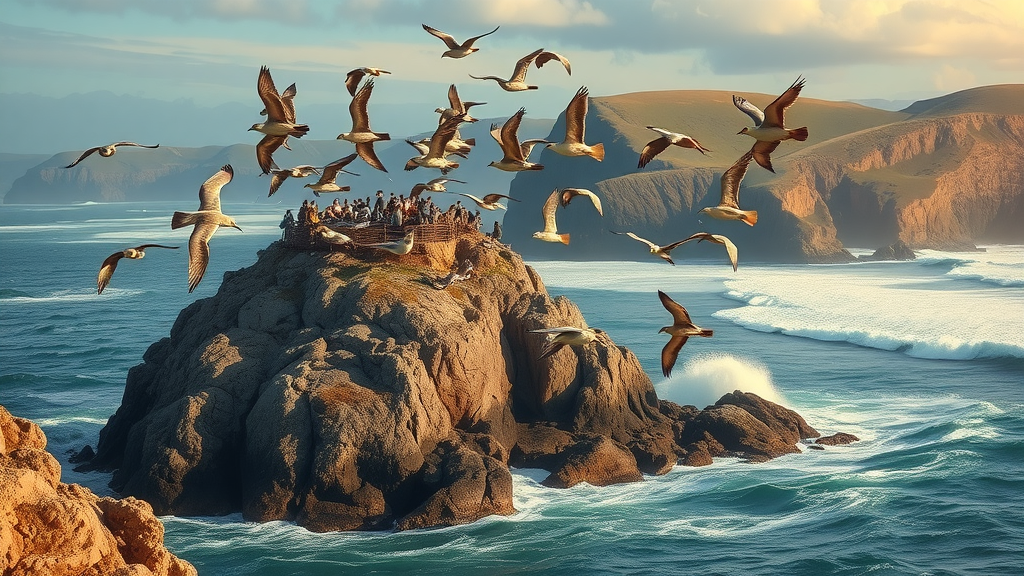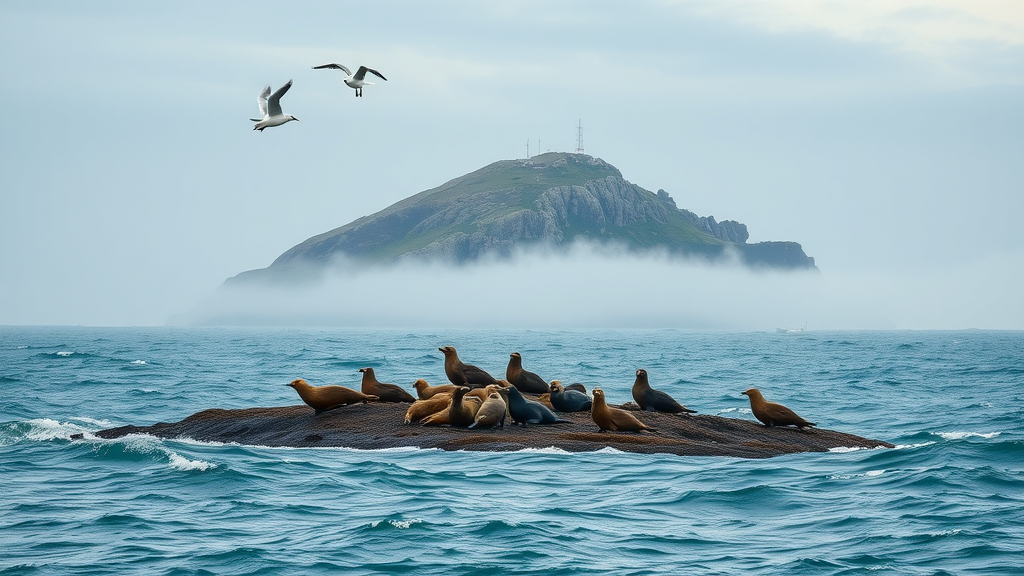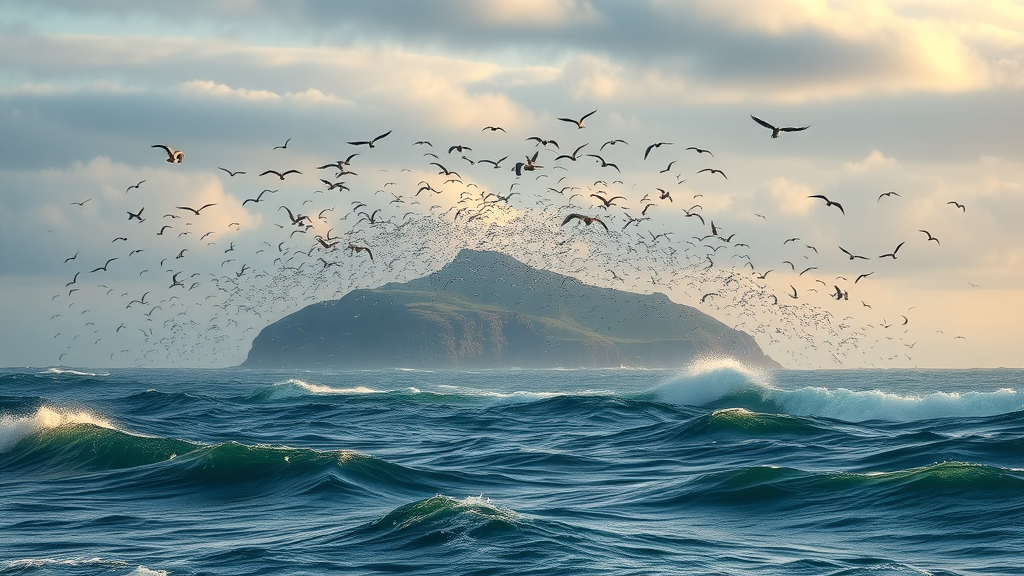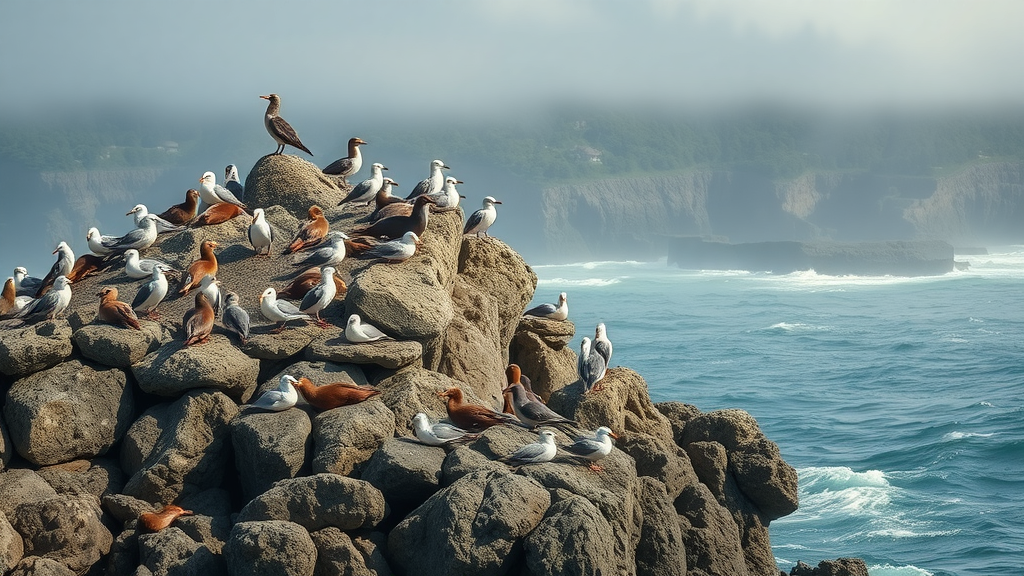The Untold Importance of Castle Rock National Wildlife Refuge for Coastal Ecosystems
Hidden just off the rugged coast of northern California lies a place that few have ever set foot on, yet its influence ripples through the lives of countless creatures and the health of the wider ocean. Castle Rock National Wildlife Refuge, a mere half-mile offshore from Crescent City and barely stretching across 14 acres, may appear on maps as little more than a rocky speck. But this inconspicuous island harbors secrets that sustain some of the Pacific Coast’s most vital wildlife, safeguarding the delicate rhythms of life where land meets sea. In a world where wild places are shrinking, understanding why places like Castle Rock matter is more urgent than ever.
At first glance, the value of a refuge closed to the public might not seem clear. After all, much of our national wildlife network is celebrated for public access and recreation. Yet, Castle Rock stands apart. The island itself is off-limits, cordoned by protective regulations and buffer zones that shield its inhabitants from even the most well-meaning human curiosity. This forced distance raises profound questions: Why has such tight protection been deemed necessary? What lives and unique ecological dramas unfold here, just out of sight and reach? As our society weighs the needs of wildlife conservation against human interests, it becomes essential to probe the hidden roles that small, protected sanctuaries play in safeguarding both vulnerable species and the health of entire marine environments.

Castle Rock National Wildlife Refuge: A Hidden Sanctuary That Shapes Life Along the Pacific Flyway
Castle Rock National Wildlife Refuge may be physically small, but its place in the region’s environmental framework is anything but minor. This rare island outpost supports several hundred thousand seabirds every year, offering a critical roost and breeding site otherwise lost to predation and disturbance elsewhere along the busy West Coast. From its steep, guano-stained cliffs to the swirling, food-rich waters below, Castle Rock functions as both fortress and nursery for species that depend upon isolation for survival. Species such as murres, auklets, gulls, and cormorants use the rock’s inaccessibility as a shield against egg theft by terrestrial mammals and the stress caused by human intrusion.
The island’s northeastern reefs and tide pools double as essential haul-out spots for marine mammals. Harbor seals, northern elephant seals, and both California and Steller sea lions stake temporary claims here, finding respite from storms, predators, and the constant churn of ocean life. But what happens if a rookery like Castle Rock loses its isolation due to disturbance? Research and management experience suggest that the resulting stress—whether from unregulated boating, curious visitors, or even drone overflights—can destabilize entire generations of wildlife. Chicks may be abandoned. Mammals may become disoriented or separated from their young. In the context of broader ecosystem health, losing this refuge could weaken the resilience of species up and down the Pacific coast, with consequences stretching far beyond any one island.

Why Strict Protection at Castle Rock Safeguards Birds, Marine Mammals, and Future Generations
As a leading authority in wildlife refuge management, Castle Rock National Wildlife Refuge demonstrates the immense benefits of strict site protection. By remaining physically closed to the public—and surrounded by a 300-foot marine buffer called the Castle Rock Special Closure—the refuge eliminates the direct and indirect disturbances that often threaten sensitive rookeries and vulnerable haul-out sites. This model ensures that dense colonies of seabirds can hatch, fledge, and maintain robust numbers, while harbor seals and sea lions are permitted undisturbed rest essential for healthy breeding and migration cycles.
The positive outcomes of such vigilance extend well beyond Castle Rock’s shores. Each year, the refuge’s intact environment helps stabilize local and migratory populations of birds and mammals, which in turn support the broader web of marine and terrestrial life. For those studying coastal dynamics or participating in citizen science, Castle Rock’s example proves that effective management sometimes means minimizing human intrusion altogether. In an era of pervasive drone use and high recreational pressure, the preservation of a truly undisturbed space has become an indispensable tool for conservation success.
From Isolated Rock to Vital Rookery: Understanding Castle Rock’s Historical and Ecological Value

Though Castle Rock itself is off-limits to visitors, its story speaks to a continuous evolution in wildlife management strategies. Historically, many seabird colonies suffered catastrophic declines due to human disturbance and predation brought by invasive land mammals. Over time, advocates and resource managers recognized that complete isolation—difficult as it may seem—offered the only path to recovery for these species. By designating Castle Rock as a National Wildlife Refuge and later instituting the Special Closure that restricts not only landings but also watercraft approaches and overflights, California’s conservation agencies extended these protections into the marine realm, offering a buffer against both modern and historic threats. Today, Castle Rock stands as both a testament to past lessons and a living laboratory for future success.
What the Castle Rock Special Closure Means for California’s Marine Protected Areas
The creation of the Castle Rock Special Closure is more than just a local initiative—it marks an integral node in California’s statewide Marine Protected Area (MPA) Network. One of 14 special closures up and down the coast, this buffer zone integrates the island ecosystem into a broader matrix of protected habitats, linking seabird and marine mammal health with the well-being of offshore fisheries and coastal communities. These protections limit boating activities and enforce strict no-access zones, which scientific studies have shown to be critical in maintaining strong breeding success for vulnerable marine life. Through active preservation and enforcement, the Castle Rock Special Closure represents an ongoing commitment to science-based conservation that could serve as a national or even global model for sensitive area protection.

Education, Respect, and the New Role of Visitors in Wildlife Conservation
By forbidding even drone flights above the refuge, local managers underscore an essential message: wildlife encounters are often best experienced from a respectful distance. This philosophy requires a shift not just in policy but in broader public attitudes, transforming the traditional role of visitors from passive observers or “users” to active stewards of wild places. Even though Castle Rock National Wildlife Refuge is closed to direct exploration, its boundaries are living reminders that absence can be just as powerful a presence when it comes to wildlife protection. For educators, students, and conservation-minded travelers, the refuge offers an opportunity to learn from afar and contribute support by spreading awareness of the importance of undisturbed sanctuaries along the coast.
Castle Rock’s Legacy: Protection, Science, and a Deep Respect for Wildlife Life Cycles
Rooted in the larger mission of the U.S. Fish & Wildlife Service, the management philosophy at Castle Rock National Wildlife Refuge centers on letting nature take the lead. This approach is visible in the decision to maintain strict closures—on land, in water, and even above the refuge. It is an acknowledgment that human presence, however well-intentioned, often carries hidden costs for species that survive on the margins. By creating an environment where seabirds and marine mammals can carry out life’s most vital processes without interference, Castle Rock upholds the principle that effective stewardship sometimes means knowing when to step back. The site serves as an active demonstration of conservation based on science, respect, and long-term thinking rather than easy access or convenience.
The emphasis on exclusion is coupled with educational outreach, inviting the public to understand the “why” behind these policies even if they cannot set foot on the island itself. In this way, Castle Rock National Wildlife Refuge becomes a touchstone for best practices in habitat preservation not only for the region but for marine environments everywhere.
What Visitors Are Saying About Experiences Near Castle Rock
While the island itself remains inaccessible by law, the beauty and power of Castle Rock’s setting are often felt from the surrounding shoreline and trails. Seeing the iconic rock from afar or catching glimpses of circling seabirds and basking seals can deeply impress those who take the time to notice. Reviews echo the deep appreciation that comes from encountering nature in its pure, untrammeled form, if only from a respectful distance.
Impressive rock island for seabirds & seals.
Stories like this capture the allure and mystery of Castle Rock National Wildlife Refuge. Such authentic experiences serve as evidence that even strict conservation measures can produce rewarding encounters, inspiring others to support the sanctuary’s continued protection. By prioritizing respect and distance, everyone has an opportunity to bear witness to the wonders of wildlife, ensuring these ecosystems remain vibrant for generations to come.
Why Castle Rock National Wildlife Refuge Embodies the Future of Coastal Conservation
As coastal environments face mounting pressure from human development and recreation, refuges like Castle Rock National Wildlife Refuge provide a blueprint for lasting success. By combining strict on-site protection with inclusive public education, this tiny outpost proves that even small spaces can have outsized influence when thoughtfully managed. The story of the refuge stands as a living lesson—one that continues to shape how marine ecosystems are valued and defended going forward. Thanks to a philosophy centered on science, respect, and exclusion where necessary, Castle Rock National Wildlife Refuge is not only preserving existing resources but also inspiring the next generation of wildlife advocates.
The careful stewardship at Castle Rock National Wildlife Refuge reminds us that real conservation progress is made possible through commitment, innovation, and a willingness to embrace difficult trade-offs. Understanding and supporting protected sanctuaries like these is key to maintaining the delicate balance between human interests and the astonishing diversity of life at the edge of the Pacific.
Contact the Experts at Castle Rock National Wildlife Refuge
If you’d like to learn more about how Castle Rock National Wildlife Refuge contributes to coastal wildlife preservation and marine ecosystem health, contact the team at Castle Rock National Wildlife Refuge.
- 📍 Address: Humboldt Bay National Wildlife Refuge, 1020 Ranch Rd Loleta, Crescent City, CA 95551, USA
- 🌐 Website: http://www.fws.gov/refuge/castle_rock/
Castle Rock National Wildlife Refuge Location and Availability
- 🕒 Hours of Operation: Not published / Refuge is closed to the public to protect wildlife

 Add Row
Add Row  Add
Add 





Write A Comment